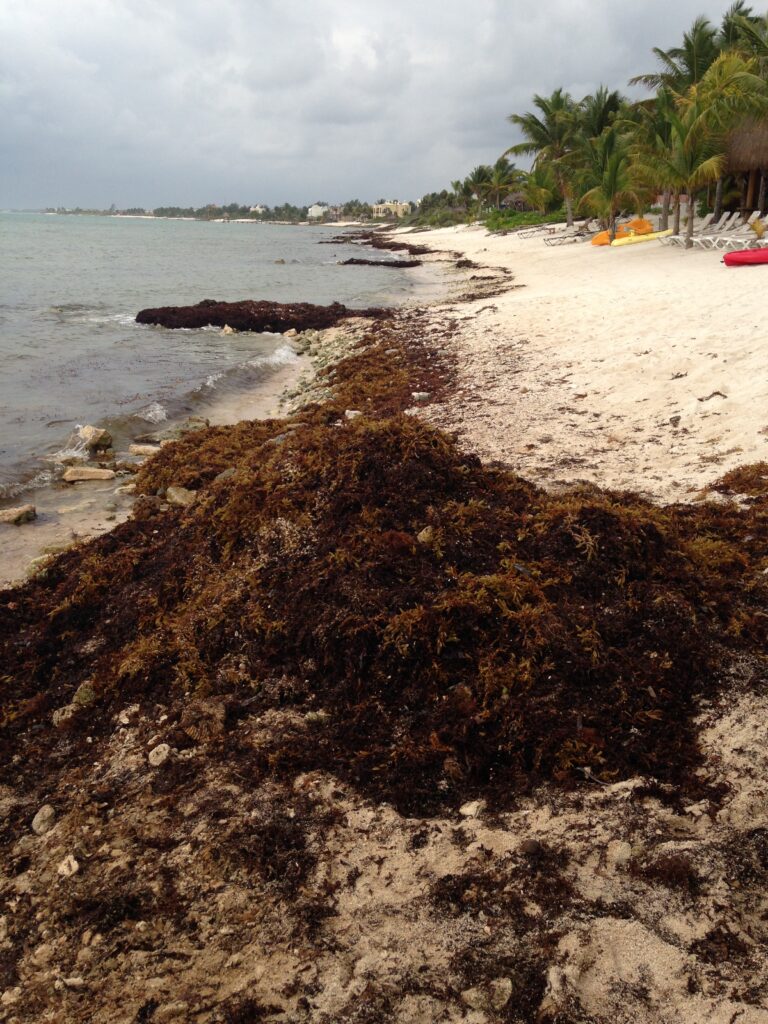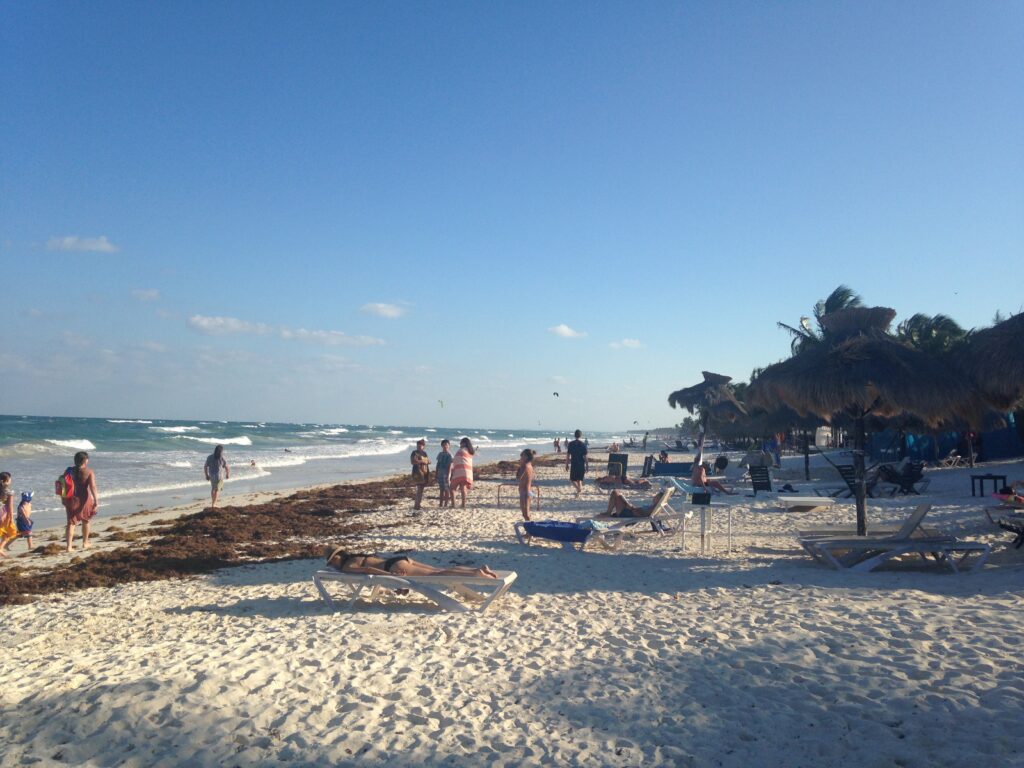Fishing Through Sargassum
Scientists predict an unprecedented increase in the volume of seaweed washing ashore in 2023. How do we fish through the sargassum?

What is Sargassum Seaweed?
Sargassum is a naturally occurring brown, macro algae that floats across the ocean in large island-like masses. It originates in the Sargasso Sea, a region of the north Atlantic Ocean bound by four ocean currents that form a gyre 680 miles wide by 2000 miles long. While floating, sargassum seaweed provides shelter and food for marine life. The ocean water beneath the surface in the Sargasso Sea is distinctive for its deep blue color and exceptional clarity, with underwater visibility of up to 200 feet. https://www.youtube.com/watch?v=j6FTMSLIaJI

Why so Much Sargassum?
For the past decade, sargassum levels have been increasing, with 2023 predicted to be the heaviest bloom yet. According to scientists, the increase in sargassum algae is linked to a weather event in 2010 that resulted in a piece of the Sargasso Sea breaking off and establishing a new algae population. Ideal ocean conditions fostered this newly established sargassum patch. Since 2011, the Great Atlantic Sargassum Belt has been observed via satellite imagery, spanning 5000 miles, from Africa to the gulf of Mexico.https://www.science.org/doi/10.1126/science.aaw7912#:~:text=Pelagic%20Sargassum%20is%20abundant%20in,to%20the%20Gulf%20of%20Mexico.

The Amazon Factor
Rising levels of nitrogen and phosphorous, a process known as eutrophication, are believed to feed the Great Atlantic Sargassum Belt. The data points to an interconnected quandary of human activity and climate change with the crux of the problem in the Amazon basin. Increased farming activity in South America pumps more fertilizer deposits into our ocean’s largest tributary, the Amazon River. The nutrient-rich waters of the Amazon settle into ocean currents, arrive in the Great Atlantic Sargassum Belt and foster. The sea acts as a big mixing pot and the algae gets dispersed, with much of it ending up in Caribbean waters and eventually, on the flat you may be intending to sight fish.

Fishing Through Sargassum
Some of the worlds most cherished flats fishing destinations lie directly in the path of the sargassum surge. Obviously, mounds of rotting, stinky seaweed are aesthetically unpleasant but also impede flats access and inhibit the sight-fishing game. Some anglers have returned to their favorite beaches and flats and found them inaccessible due to the volume of sargassum. “I had to climb over the stuff on hands and knees to reach my favorite flat. The seaweed collects in the bays where I used to sight cast to bonefish and permit. Many of those areas are un-fishable this year,” says Aaron Fox, a Montana-based fly fishing guide who frequently fishes the Riviera Maya. https://sargassummonitoring.com/

Floating Sargasso Crabs
As marine life adjusts to the altered marine environment, guides and anglers follow suit. Crabs flock to the sargassum to feed on this new floating food source. Bonefish, permit, and tarpon pick off the crabs on the surface like trout during a mayfly hatch. “On his first day, Pete stuck a big permit on a floating crab. Evidently, it was cruising in the film sipping like a big Missouri brown” Fox adds. This activity has spawned a whole new wave of fly design, the Sargasso Crabs. https://www.youtube.com/watch?v=pCBSc1zfoXA.
Alter Your Approach for the Sargassum Surge
In 2023, the amount of sargassum drifting offshore in the Great Atlantic Sargassum Belt is four times that of normal. Throughout the Riviera Maya, Bahamas, and Florida, anglers should expect mass quantities of “Gulf Weed”. Fish will likely be harder to see and some flats may not be accessible. The dumbell-eyed flies that we’ve relied upon for decades may be algae magnets. Utilizing a full floating fly line and an unweighted fly, however, you may be able to reach the rarified air of those who have caught a permit or tarpon on a dry fly! Fishing through the sargassum requires preparation, homework, and tackle well-suited to the new game. https://cd-fishing.us/cart/?product_added_to_cart=52&quantity=1



